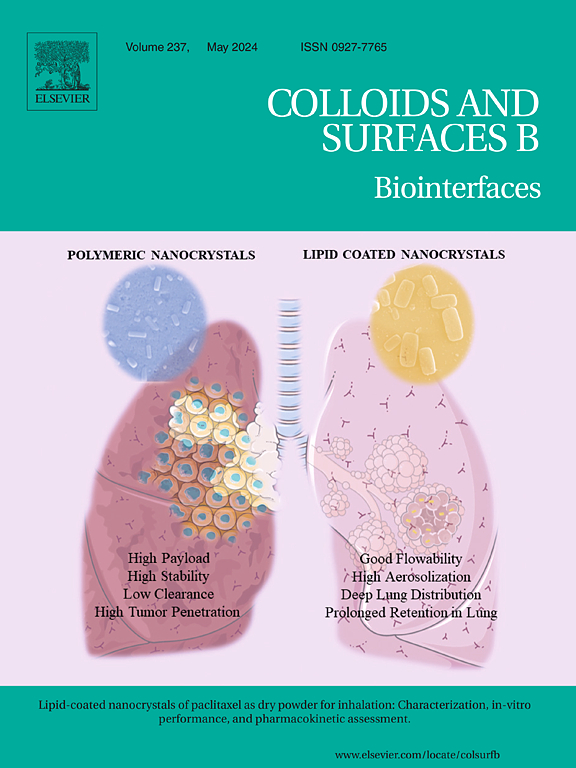Photoelectric activity of titania nanotube by dimensionality control for neural-stimulated osteoblast activation
IF 5.4
2区 医学
Q1 BIOPHYSICS
引用次数: 0
Abstract
Simultaneous bone and nerve regeneration is important in facilitating osseointegration. However, regeneration of neural elements is often overlooked when designing orthopedic implants. Since nerves are electroactive tissues that regulate bone formation via neuropeptide release, developing photoelectric coating material on implants is optimal for neural-stimulated osteoblast activation. In this study, three kinds of vertically oriented TiO2 nanotube (TNT) coatings with tube diameter of 60, 110 and 180 nm were fabricated on Ti implants denoting as TNT-60, TNT-110 and TNT-180, respectively. TNT-60 coating with higher oxygen-vacancy concentration and lower crystallinity displayed higher visible-light absorption capacity and transient photocurrent density. Enhanced photoelectric activity of TNT-60 was ascribed to narrowed bandgap of TiO2 and enhanced separation efficiency of photogenerated carriers. TNTs coatings under visible-light irradiation significantly improved proliferation of PC12 cells and cell differentiation in terms of neurite outgrowth and calcitonin gene-related peptide release. Among them, TNT-60 coating exerted the greatest enhancement via Ca2 + influx mechanism. Osteoblast differentiation and mineralization of MC3T3-E1 cells were significantly enhanced when cells were cultured with conditioned medium from PC12 cells cultured on the TNTs coatings with visible-light illumination. This indicated neural-stimulated osteoblast activation. Above all, photoelectric TNT coating provides a promising approach for targeting nerve activation to stimulate osteogenesis.
求助全文
约1分钟内获得全文
求助全文
来源期刊

Colloids and Surfaces B: Biointerfaces
生物-材料科学:生物材料
CiteScore
11.10
自引率
3.40%
发文量
730
审稿时长
42 days
期刊介绍:
Colloids and Surfaces B: Biointerfaces is an international journal devoted to fundamental and applied research on colloid and interfacial phenomena in relation to systems of biological origin, having particular relevance to the medical, pharmaceutical, biotechnological, food and cosmetic fields.
Submissions that: (1) deal solely with biological phenomena and do not describe the physico-chemical or colloid-chemical background and/or mechanism of the phenomena, and (2) deal solely with colloid/interfacial phenomena and do not have appropriate biological content or relevance, are outside the scope of the journal and will not be considered for publication.
The journal publishes regular research papers, reviews, short communications and invited perspective articles, called BioInterface Perspectives. The BioInterface Perspective provide researchers the opportunity to review their own work, as well as provide insight into the work of others that inspired and influenced the author. Regular articles should have a maximum total length of 6,000 words. In addition, a (combined) maximum of 8 normal-sized figures and/or tables is allowed (so for instance 3 tables and 5 figures). For multiple-panel figures each set of two panels equates to one figure. Short communications should not exceed half of the above. It is required to give on the article cover page a short statistical summary of the article listing the total number of words and tables/figures.
 求助内容:
求助内容: 应助结果提醒方式:
应助结果提醒方式:


